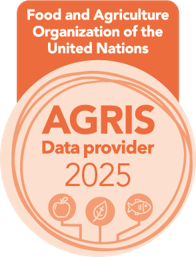Effects of organic and inorganic fertilizer combination with insect netting on the production of Indian spinach (Basella alba L.)
Abstract
Best horticulture management has been practiced to reduce the quantity of inorganic fertilizer applications with insect net for higher production of Indian spinach (Basella alba L.). The experiment was conducted at the Horticulture Farm of Bangladesh Agricultural University (BAU), Mymensingh during February to May, 2016. Two factors experiment were conducted on insect nettings (Factor A): control (N0), Netting (N1) and different fertilizers (Factor B): control (F0), Vermicompost 10 t/ha (F1), Vermicompost 15 t/ha (F2), 2/3rdof F2+ 1/3rdof F4 (F3), Inorganic fertilizer (F4). Combination of insect net and combined of organic and inorganic fertilizers (N1F3) gave the significantly higher growth and yield of Indian spinach (B. alba) compared to other treatment combination. The maximum vine length (77.71 cm), after 45 days after sowing was found in N1F3 and it was 72% higher vine length of Indian spinach compared to control. The highest yield of Indian spinach was 38.67 t/ha in N1F3 which was, 80% higher yield compared to control (7.77 t/ha). The treatment combination of N1F3 provided maximum leaf numbers per plant and leaf length of Indian spinach. Organic and inorganic fertilizer application together where reduced amount of inorganic fertilizer technology for crop production can be practiced as a sustainable technology for better growth, yield and quality of a plant, also to improve the soil health and environment in long run.
Keywords:
Indian spinach (Basella alba L.), Inorganic fertilizer, Insect net, Vermicompost, YieldDownloads
Published
How to Cite
Issue
Section
Copyright (c) 2020 Agriculture and Environmental Science Academy

This work is licensed under a Creative Commons Attribution-NonCommercial 4.0 International License.

